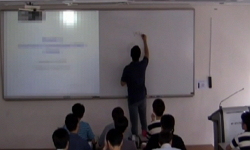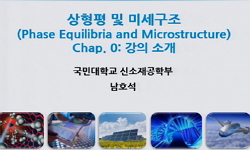It has been observed that the linear relationship between the logarithm of bioconcentration factor (log BCF) of highly hydrophobic chemicals and their log K<SUB>ow</SUB> breaks when log K<SUB>ow</SUB> becomes greater than 6.0. ...
http://chineseinput.net/에서 pinyin(병음)방식으로 중국어를 변환할 수 있습니다.
변환된 중국어를 복사하여 사용하시면 됩니다.
- 中文 을 입력하시려면 zhongwen을 입력하시고 space를누르시면됩니다.
- 北京 을 입력하시려면 beijing을 입력하시고 space를 누르시면 됩니다.
https://www.riss.kr/link?id=A76350033
- 저자
- 발행기관
- 학술지명
- 권호사항
-
발행연도
2008
-
작성언어
Korean
- 주제어
-
KDC
539
-
등재정보
SCOPUS,KCI등재
-
자료형태
학술저널
- 발행기관 URL
-
수록면
67-77(11쪽)
-
KCI 피인용횟수
3
- 제공처
-
0
상세조회 -
0
다운로드
부가정보
다국어 초록 (Multilingual Abstract)
It has been observed that the linear relationship between the logarithm of bioconcentration factor (log BCF) of highly hydrophobic chemicals and their log K<SUB>ow</SUB> breaks when log K<SUB>ow</SUB> becomes greater than 6.0. Consequently, super hydrophobic chemicals were not thought to cause baseline toxicity as a single compound. Researchers often call this phenomenon as hydrophobicity cutoff meaning that bioconcentration or corresponding baseline toxicity has a certain cutoff at high log K<SUB>ow</SUB> value of hydrophobic organic pollutants. The underlying assumption is that the increased molecular size with increasing hydrophobicity prohibits highly hydrophobic compounds from crossing biological membranes. However, there are debates among scientists about mechanisms and at which log K<SUB>ow</SUB> this phenomenon occurs. This paper reviews three hypotheses to explain observed cutoff: steric effects, kinetic or physiological limitations. and chemical activity cutoff. Although the critical molecular size that makes biological membranes not permeable to hydrophobic organic chemicals is uncertain, size effects in combination with kinetic limitation would explain observed non-linearity between log BCF and log K<SUB>ow</SUB>. Chemical activity of hydrophobic chemicals generally decreases with increasing melting point at their aqueous solubility. Thus, there may be a chemical activity cutoff of baseline toxicity if there is a critical chemical activity over which baseline effects can be observed.
참고문헌 (Reference)
1 Meyer H, "Welcher eigenschaft der anaesthetica bedingt ihre narkotische wirkung?" 42 : 109-118, 1899
2 Reichenberg F, "Two complementary sides of bioavailability: Accessibility and chemical activity of organic contaminants in sediments and soils" 25 (25): 1239-1245, 2006
3 Heringa MB, "Toward more useful in vitro toxicity data with measured free concentrations" 38 (38): 6263-6270, 2004
4 Katz Y, "Thermodynamic constants for nonelectrolyte partition between dimyristoyl lecithin and water" 17 (17): 101-120, 1974
5 Davies RP, "The prediction of bioconcentration in fish" 18 (18): 1253-1262, 1984
6 Lewis GN, "The law of physico-chemical change" 37 : 49-69, 1901
7 EC, "Technical Guidance Document in support of Commission Directive 93/67/EEC on risk assessment for new notified substances and Commission Regulation (EC) 1488/94 on risk assessment for existing substances.PART III,ISBN 92-827-8011-2" 1996
8 UNEP, "Stockholm Convention on Persistent Organic Pollutants (POPs)"
9 Vaes WHJ, "Solid phase microextraction as a tool to determine membrane/water partition coefficients and bioavailable concentrations in in vitro systems" 10 (10): 1067-1072, 1997
10 Sijm DTHM, "Size-dependent biocon-centration kinetics of hydrophobic organic-chemicals in fish based on diffusive mass-transfer and allometric relationships" 29 (29): 2769-2777, 1995
1 Meyer H, "Welcher eigenschaft der anaesthetica bedingt ihre narkotische wirkung?" 42 : 109-118, 1899
2 Reichenberg F, "Two complementary sides of bioavailability: Accessibility and chemical activity of organic contaminants in sediments and soils" 25 (25): 1239-1245, 2006
3 Heringa MB, "Toward more useful in vitro toxicity data with measured free concentrations" 38 (38): 6263-6270, 2004
4 Katz Y, "Thermodynamic constants for nonelectrolyte partition between dimyristoyl lecithin and water" 17 (17): 101-120, 1974
5 Davies RP, "The prediction of bioconcentration in fish" 18 (18): 1253-1262, 1984
6 Lewis GN, "The law of physico-chemical change" 37 : 49-69, 1901
7 EC, "Technical Guidance Document in support of Commission Directive 93/67/EEC on risk assessment for new notified substances and Commission Regulation (EC) 1488/94 on risk assessment for existing substances.PART III,ISBN 92-827-8011-2" 1996
8 UNEP, "Stockholm Convention on Persistent Organic Pollutants (POPs)"
9 Vaes WHJ, "Solid phase microextraction as a tool to determine membrane/water partition coefficients and bioavailable concentrations in in vitro systems" 10 (10): 1067-1072, 1997
10 Sijm DTHM, "Size-dependent biocon-centration kinetics of hydrophobic organic-chemicals in fish based on diffusive mass-transfer and allometric relationships" 29 (29): 2769-2777, 1995
11 Opperhuizen A, "Relationship between bioconcentration in fish and steric factors of hydrophobic chemicals" 14 (14): 1871-1896, 1985
12 Dimitrov SD, "Predicting bioconcentration factors of highly hydrophobic chemicals. Effects of molecular size" 74 (74): 1823-1830, 2002
13 Kwon J-H, "Partitioning thermodynamics of selected endocrine disruptors between water and synthetic membrane vesicles: Effects of membrane compositions" 41 (41): 4011-4018, 2007b
14 Kwon J-H, "Partitioning of moderately hydrophobic endocrine disruptors between water and synthetic membrane vesicles" 25 (25): 1984-1992, 2006
15 Chiou CT, "Partitioning of Organic-Compounds in Octanol-Water Systems" 16 (16): 4-10, 1982
16 Brown RS, "Partition controlled delivery of hydrophobic substances in toxicity tests using poly(dimethylsiloxane) (PDMS) films" 35 (35): 4097-4102, 2001
17 Neely WB, "Partition coefficients to measure bioconcentration potential of organic chemicals in fish" 8 (8): 1113-1115, 1974
18 Sangster J, "Octanol-water partition coefficients of simple organic compounds" 18 (18): 1111-1229, 1989
19 Heringa MB, "Negligible depletion solid-phase microextraction with radiolabeled analytes to study free concentrations and protein binding: an example with [H-3]estradiol" 74 (74): 5993-5997, 2002
20 Mackay D, "Multimedia Environmental Models-The Fugacity Approach" Lewis Publishers 1991
21 Franks NP, "Molecular and cellular mechanisms of general-anesthesia" 367 (367): 607-614, 1994
22 Albert B, "Molecular Biology of the Cell, 4th" Garland Science 2002
23 Escher BI, "Modes of action in ecotoxicology: Their role in body burdens, species sensitivity, QSARs, and mixture effects" 36 (36): 4201-4217, 2002
24 Kwon J-H, "Modeling binding equilibrium in a competitive estrogen receptor binding assay" 69 : 1025-1031, 2007a
25 Dulfer WJ, "Membrane water partitioning of polychlorinated-biphenyls in small unilamellar vesicles of 4 saturated phosphatidylcholines" 29 (29): 2548-2554, 1995
26 van Wezel AP, "Membrane burdens of chlorinated benzenes lower the main phase transition temperature in dipalmitoyl-phosphatidylcholine vesicles: Implications for toxicity by narcotic chemicals" 15 (15): 203-212, 1996
27 Escher BI, "Mechanistic studies on baseline toxicity and uncoupling of organic compounds as a basis for modeling effective membrane concentrations in aquatic organisms" 64 (64): 20-35, 2002
28 Gobas FAPC, "Mechanism of biomagnification in fish under laboratory and field conditions" 33 (33): 133-141, 1999
29 Escher BI, "Internal exposure: Linking bioavailability to effects" 38 (38): 455A-462A, 2004
30 Nichols JW, "In vitro-in vivo extrapolation of quantitative hepatic biotransformation data for fish. II. Modeled effects on chemical bioaccumulation" 26 (26): 1304-1319, 2007
31 Chiou CT, "Improved prediction of octanol-water partition coefficients from liquid-solute water solubilities and molar volumes" 39 (39): 8840-8846, 2005
32 Meylan WM, "Improved method for estimating bioconcentration/bioaccumulation factor from octanol /water partition coefficient" 18 (18): 664-672, 1999
33 Smejtek P, "Hydrophobicity and sorption of chlorophenolates to lipid membranes" 33 (33): 177-201, 1996
34 Singer SJ, "Fluid mosaic model of structure of cell-membranes" 175 (175): 720-731, 1972
35 Escher BI, "Evaluation of liposome-water partitioning of organic acids and bases. 1. Development of a sorption model" 34 (34): 3954-3961, 2000
36 Ter Laak TL, "Effects of dilution on the exposure in sediment toxicity tests buffering of freely dissolved concentrations and changes in mixture composition" 26 (26): 2187-2191, 2007
37 Moore MN, "Do nanoparticles present ecotoxicological risks for the health of aquatic environment?" 32 (32): 967-976, 2006
38 Muir DCG, "Dietary accumulation of four chlorinated dioxin congeners by rainbow trout and fathead minnows" 7 (7): 227-236, 1988
39 Bopp SK, "Development of a solvent-free, solid-phase in vitro bioassay using vertebrate cells" 25 (25): 1390-1398, 2006
40 Reichenberg F, "Determining the chemical activity of hydrophobic organic compounds in soil using polymer coated vials" 2008
41 Mackay D, "Correlation of bioconcentration factors" 16 (16): 274-278, 1982
42 Verhaar HJM, "Classifying environmental pollutants. 1. Structure-activity relationships for prediction of aquatic toxicity" 25 (25): 471-491, 1992
43 Mayer P, "Can highly hydrophobic organic substances cause aquatic baseline toxicity and can they contribute to mixture toxicity?" 25 (25): 2639-2644, 2006
44 Gobas FAPC, "Bioconcentration of hydrophobic chemicals in fish-relationship with membrane permeation" 5 (5): 637-646, 1986
45 Jonker MTO, "Bioconcentration factor hydrophobicity cutoff: An artificial phenomenon reconstructed" 41 (41): 7363-7369, 2007
46 Muir DCG, "Bioconcentration and disposition of 1,3,6,8-tetrachlorodibenzo-p-dioxin and octachlorodibenzo-p-dioxin by rainbow trout and fathead minnows" 5 (5): 261-272, 1986
47 Gobas FAPC, "Bioconcentration and biomagnification in the aquatic environment,Handbook of Property Estimation Methods for Chemicals" CRC Press 189-231, 2000
48 Bruggeman WA, "Bioaccumulation of super-lipophilic chemicals in fish" 7 (7): 173-189, 1984
49 Swackhamer DL, "Bioaccumulation of PCBs by algae: Kinetics versus equilibrium" 12 (12): 831-838, 1993
50 D’Adamo R, "Bioaccumulation and biomagnification of polycyclic aromatic hydrocarbons in aquatic organisms" 56 (56): 45-49, 1997
51 Kwon J-H, "Baseline toxicity of hydrophobic compounds: Development of a kinetically controlled dosing system and determination of membrane perturbation; Presented at SETAC EU 18th Annual Meeting" 2008
52 Escher BI, "Baseline toxicity (narcosis) of organic chemicals determined by in vitro membrane potential measurements in energy-transducing membranes" 36 (36): 1971-1979, 2002
53 Dimitrov S, "Base-line model for identifying the bioaccumulation potential of chemicals" 16 (16): 531-554, 2005
54 Meylan WM, "Atom fragment contribution method for estimating octanol-water partition-coefficients" 84 (84): 83-92, 1995
55 Sijm DTHM, "Allometry in the uptake of hydrophobic chemicals determined in-vivo and in isolated-perfused gills" 131 (131): 130-135, 1995
56 Barber MC., "A review and comparison of models for predicting dynamic chemical bioconcentration in fish" 22 (22): 1963-1992, 2003
57 Gobas FAPC, "A novel method for measuring membrane-water partition coefficients of hydrophobic organic chemicalscomparison with 1-octanol-water partitioning" 77 (77): 265-272, 1988
58 Kelly BC, "-web specific biomagnification of persistent organic pollutants" 317 (317): 236-239, 2007
동일학술지(권/호) 다른 논문
-
- 환경독성보건학회
- 최외숙(Oi-Sook Choi)
- 2008
- SCOPUS,KCI등재
-
마우스 경구 및 경피투여에 의한 SiO₂ 나노입자의 체내분포
- 환경독성보건학회
- 박은정(Eun-Jeung Park)
- 2008
- SCOPUS,KCI등재
-
- 환경독성보건학회
- 편집부(편집자)
- 2008
- SCOPUS,KCI등재
-
서울 거주 산모의 초유 중 노닐페놀 분석을 통한 인체노출평가
- 환경독성보건학회
- 이빛나(Bitna Yi)
- 2008
- SCOPUS,KCI등재
분석정보
인용정보 인용지수 설명보기
학술지 이력
| 연월일 | 이력구분 | 이력상세 | 등재구분 |
|---|---|---|---|
| 2017 | 평가예정 | 신규평가 신청대상 (신규평가) | |
| 2016-12-01 | 평가 | 등재후보 탈락 (계속평가) | |
| 2015-12-01 | 평가 | 등재후보로 하락 (기타) |  |
| 2011-01-01 | 평가 | 등재 1차 FAIL (등재유지) |  |
| 2010-08-16 | 학술지명변경 | 한글명 : 환경독성학회지 -> 환경독성보건학회지 |  |
| 2010-07-30 | 학술지명변경 | 외국어명 : journal of environmental toxicology -> Environmental Health and Toxicology |  |
| 2010-04-27 | 학회명변경 | 한글명 : 한국환경독성학회 -> 환경독성보건학회영문명 : The Korean Society Of Environmental Toxicology -> The Korean Society of Environmental Health and Toxicology |  |
| 2008-01-01 | 평가 | 등재학술지 선정 (등재후보2차) |  |
| 2007-01-01 | 평가 | 등재후보 1차 PASS (등재후보1차) |  |
| 2006-01-01 | 평가 | 등재후보 1차 FAIL (등재후보2차) |  |
| 2005-05-18 | 학술지등록 | 한글명 : 환경독성학회지외국어명 : journal of environmental toxicology |  |
| 2005-01-01 | 평가 | 등재후보 1차 PASS (등재후보1차) |  |
| 2003-01-01 | 평가 | 등재후보학술지 선정 (신규평가) |  |





 ScienceON
ScienceON DBpia
DBpia






